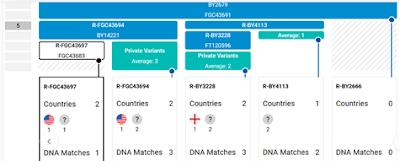Do you have Neanderthal DNA?
The early ancestors of most of us who have European ancestors just got their 15 minutes of fame this morning thanks to the Nobel Prize awarded to Svante Pääbo.
Press release: The Nobel Prize in Physiology or Medicine 2022
![]()
Press release
2022-10-03
The Nobel Assembly at Karolinska Institutet has today decided to award the 2022 Nobel Prize in Physiology or Medicine to Svante Pääbo for his discoveries concerning the genomes of extinct hominins and human evolution
Humanity has always been intrigued by its origins. Where do we come from, and how are we related to those who came before us? What makes us, Homo sapiens, different from other hominins?
Through his pioneering research, Svante Pääbo accomplished something seemingly impossible: sequencing the genome of the Neanderthal, an extinct relative of present-day humans. He also made the sensational discovery of a previously unknown hominin, Denisova. Importantly, Pääbo also found that gene transfer had occurred from these now extinct hominins to Homo sapiens following the migration out of Africa around 70,000 years ago. This ancient flow of genes to present-day humans has physiological relevance today, for example affecting how our immune system reacts to infections.
Pääbo’s seminal research gave rise to an entirely new scientific discipline; paleogenomics. By revealing genetic differences that distinguish all living humans from extinct hominins, his discoveries provide the basis for exploring what makes us uniquely human.
Where do we come from?
The question of our origin and what makes us unique has engaged humanity since ancient times. Paleontology and archeology are important for studies of human evolution. Research provided evidence that the anatomically modern human, Homo sapiens, first appeared in Africa approximately 300,000 years ago, while our closest known relatives, Neanderthals, developed outside Africa and populated Europe and Western Asia from around 400,000 years until 30,000 years ago, at which point they went extinct. About 70,000 years ago, groups of Homo sapiens migrated from Africa to the Middle East and, from there they spread to the rest of the world. Homo sapiens and Neanderthals thus coexisted in large parts of Eurasia for tens of thousands of years. But what do we know about our relationship with the extinct Neanderthals? Clues might be derived from genomic information. By the end of the 1990’s, almost the entire human genome had been sequenced. This was a considerable accomplishment, which allowed subsequent studies of the genetic relationship between different human populations. However, studies of the relationship between present-day humans and the extinct Neanderthals would require the sequencing of genomic DNA recovered from archaic specimens.
A seemingly impossible task
Early in his career, Svante Pääbo became fascinated by the possibility of utilizing modern genetic methods to study the DNA of Neanderthals. However, he soon realized the extreme technical challenges, because with time DNA becomes chemically modified and degrades into short fragments. After thousands of years, only trace amounts of DNA are left, and what remains is massively contaminated with DNA from bacteria and contemporary humans (Figure 1). As a postdoctoral student with Allan Wilson, a pioneer in the field of evolutionary biology, Pääbo started to develop methods to study DNA from Neanderthals, an endeavor that lasted several decades.
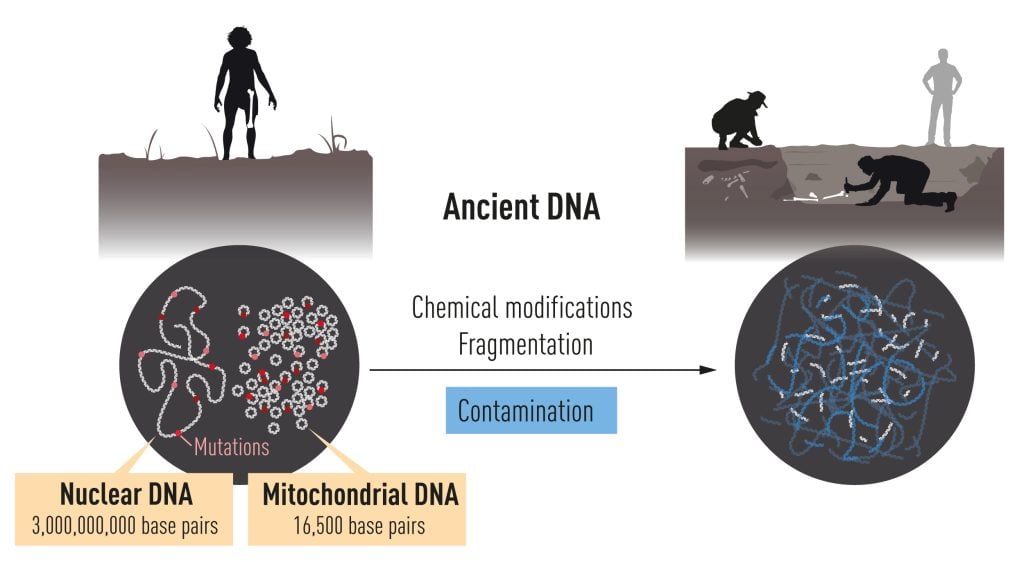
Figure 1. DNA is localized in two different compartments in the cell. Nuclear DNA harbors most of the genetic information, while the much smaller mitochondrial genome is present in thousands of copies. After death, DNA is degraded over time and ultimately only small amounts remain. It also becomes contaminated with DNA from e.g. bacteria and contemporary humans.
In 1990, Pääbo was recruited to University of Munich, where, as a newly appointed Professor, he continued his work on archaic DNA. He decided to analyze DNA from Neanderthal mitochondria – organelles in cells that contain their own DNA. The mitochondrial genome is small and contains only a fraction of the genetic information in the cell, but it is present in thousands of copies, increasing the chance of success. With his refined methods, Pääbo managed to sequence a region of mitochondrial DNA from a 40,000-year-old piece of bone. Thus, for the first time, we had access to a sequence from an extinct relative. Comparisons with contemporary humans and chimpanzees demonstrated that Neanderthals were genetically distinct.
Sequencing the Neanderthal genome
As analyses of the small mitochondrial genome gave only limited information, Pääbo now took on the enormous challenge of sequencing the Neanderthal nuclear genome. At this time, he was offered the chance to establish a Max Planck Institute in Leipzig, Germany. At the new Institute, Pääbo and his team steadily improved the methods to isolate and analyze DNA from archaic bone remains. The research team exploited new technical developments, which made sequencing of DNA highly efficient. Pääbo also engaged several critical collaborators with expertise on population genetics and advanced sequence analyses. His efforts were successful. Pääbo accomplished the seemingly impossible and could publish the first Neanderthal genome sequence in 2010. Comparative analyses demonstrated that the most recent common ancestor of Neanderthals and Homo sapiens lived around 800,000 years ago.
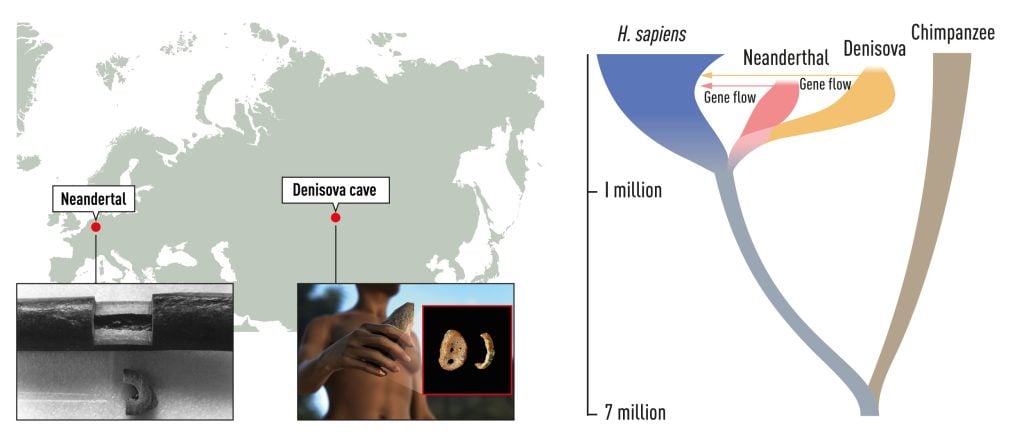
Figure 2. A. Pääbo extracted DNA from bone specimens from extinct hominins. He first obtained a bone fragment from Neandertal in Germany, the site that gave name to the Neanderthals. Later, he used a finger bone from the Denisova Cave in southern Siberia, the site that gave name to Denisovans. B. Phylogenetic tree showing the evolution and relationship between Homo sapiens and the extinct hominins. The phylogenetic tree also illustrates the gene flows discovered by Pääbo.
Pääbo and his co-workers could now investigate the relationship between Neanderthals and modern-day humans from different parts of the world. Comparative analyses showed that DNA sequences from Neanderthals were more similar to sequences from contemporary humans originating from Europe or Asia than to contemporary humans originating from Africa. This means that Neanderthals and Homo sapiens interbred during their millennia of coexistence. In modern day humans with European or Asian descent, approximately 1-4% of the genome originates from the Neanderthals (Figure 2).
A sensational discovery: Denisova
In 2008, a 40,000-year-old fragment from a finger bone was discovered in the Denisova cave in the southern part of Siberia. The bone contained exceptionally well-preserved DNA, which Pääbo’s team sequenced. The results caused a sensation: the DNA sequence was unique when compared to all known sequences from Neanderthals and present-day humans. Pääbo had discovered a previously unknown hominin, which was given the name Denisova. Comparisons with sequences from contemporary humans from different parts of the world showed that gene flow had also occurred between Denisova and Homo sapiens. This relationship was first seen in populations in Melanesia and other parts of South East Asia, where individuals carry up to 6% Denisova DNA.
Pääbo’s discoveries have generated new understanding of our evolutionary history. At the time when Homo sapiens migrated out of Africa, at least two extinct hominin populations inhabited Eurasia. Neanderthals lived in western Eurasia, whereas Denisovans populated the eastern parts of the continent. During the expansion of Homo sapiens outside Africa and their migration east, they not only encountered and interbred with Neanderthals, but also with Denisovans (Figure 3).
Paleogenomics and its relevance
Through his groundbreaking research, Svante Pääbo established an entirely new scientific discipline, paleogenomics. Following the initial discoveries, his group has completed analyses of several additional genome sequences from extinct hominins. Pääbo’s discoveries have established a unique resource, which is utilized extensively by the scientific community to better understand human evolution and migration. New powerful methods for sequence analysis indicate that archaic hominins may also have mixed with Homo sapiens in Africa. However, no genomes from extinct hominins in Africa have yet been sequenced due to accelerated degradation of archaic DNA in tropical climates.
Thanks to Svante Pääbo’s discoveries, we now understand that archaic gene sequences from our extinct relatives influence the physiology of present-day humans. One such example is the Denisovan version of the gene EPAS1, which confers an advantage for survival at high altitude and is common among present-day Tibetans. Other examples are Neanderthal genes that affect our immune response to different types of infections.
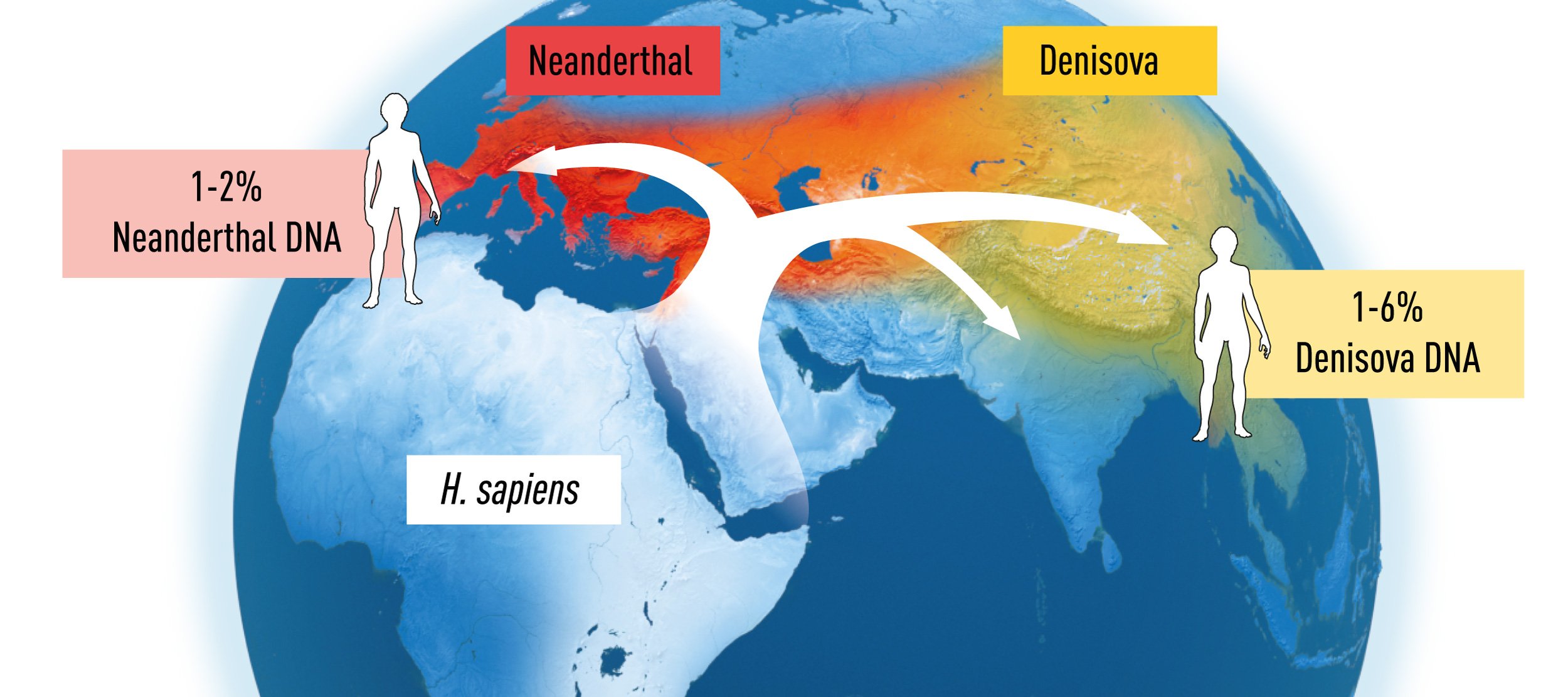
Figure 3. Pääbo’s discoveries have provided important information on how the world was populated at the time when Homo sapiens migrated out of Africa and spread to the rest of the world. Neanderthals lived in the west and Denisovans in the east on the Eurasian continent. Interbreeding occurred when Homo sapiens spread across the continent, leaving traces that remain in our DNA.
What makes us uniquely human?
Homo sapiens is characterized by its unique capacity to create complex cultures, advanced innovations and figurative art, as well as by the ability to cross open water and spread to all parts of our planet (Figure 4). Neanderthals also lived in groups and had big brains (Figure 4). They also utilized tools, but these developed very little during hundreds of thousands of years. The genetic differences between Homo sapiens and our closest extinct relatives were unknown until they were identified through Pääbo’s seminal work. Intense ongoing research focuses on analyzing the functional implications of these differences with the ultimate goal of explaining what makes us uniquely human.
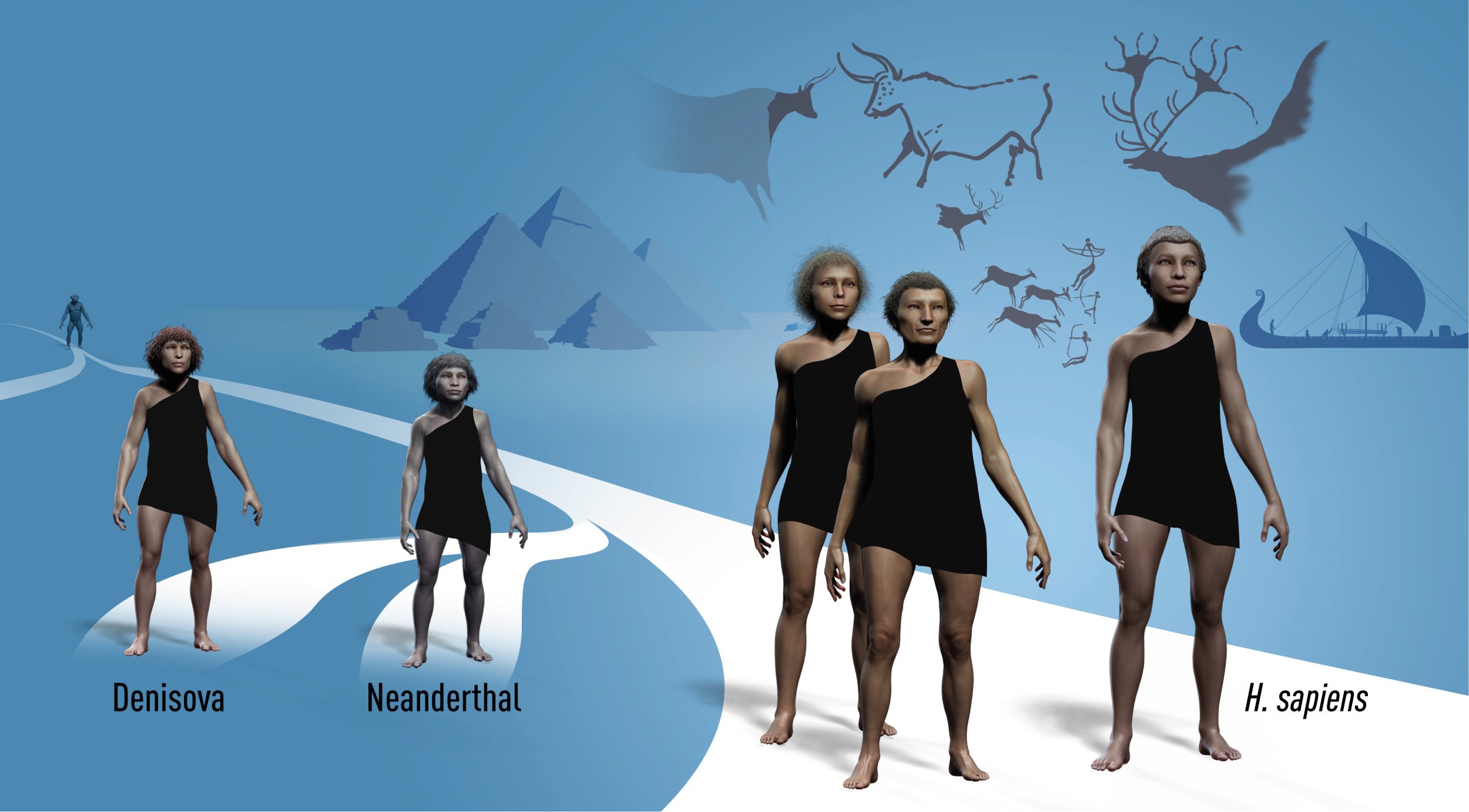
Figure 4. Pääbo’s seminal work provides a basis for explaining what makes us uniquely human.
Key publications
Krings M, Stone A, Schmitz RW, Krainitzki H, Stoneking M, Pääbo S. Neandertal DNA sequences and the origin of modern humans. Cell. 1997:90:19-30.
Green RE, Krause J, Briggs AW, Maricic T, Stenzel U, Kircher M, Patterson N, Li H, Zhai W, Fritz MH, Hansen NF, Durand EY, Malaspinas AS, Jensen JD, Marques-Bonet T, Alkan C, Prüfer K, Meyer M, Burbano HA, Good JM, Schultz R, Aximu-Petri A, Butthof A, Höber B, Höffner B, Siegemund M, Weihmann A, Nusbaum C, Lander ES, Russ C, Novod N, Affourtit J, Egholm M, Verna C, Rudan P, Brajkovic D, Kucan Ž, Gušic I, Doronichev VB, Golovanova LV, Lalueza-Fox C, de la Rasilla M, Fortea J, Rosas A, Schmitz RW, Johnson PLF, Eichler EE, Falush D, Birney E, Mullikin JC, Slatkin M, Nielsen R, Kelso J, Lachmann M, Reich D, Pääbo S. A draft sequence of the Neandertal genome. Science. 2010:328:710-722.
Krause J, Fu Q, Good JM, Viola B, Shunkov MV, Derevianko AP, Pääbo S. The complete mitochondrial DNA genome of an unknown hominin from southern Siberia. Nature. 2010:464:894-897.
Reich D, Green RE, Kircher M, Krause J, Patterson N, Durand EY, Viola B, Briggs AW, Stenzel U, Johnson PL, Maricic T, Good JM, Marques-Bonet T, Alkan C, Fu Q, Mallick S, Li H, Meyer M, Eichler EE, Stoneking M, Richards M, Talamo S, Shunkov MV, Derevianko AP, Hublin JJ, Kelso J, Slatkin M, Pääbo S. Genetic history of an archaic hominin group from Denisova Cave in Siberia. Nature. 2010:468:1053-1060.
Meyer M, Kircher M, Gansauge MT, Li H, Racimo F, Mallick S, Schraiber JG, Jay F, Prüfer K, de Filippo C, Sudmant PH, Alkan C, Fu Q, Do R, Rohland N, Tandon A, Siebauer M, Green RE, Bryc K, Briggs AW, Stenzel U, Dabney J, Shendure J, Kitzman J, Hammer MF, Shunkov MV, Derevianko AP, Patterson N, Andrés AM, Eichler EE, Slatkin M, Reich D, Kelso J, Pääbo S. A high-coverage genome sequence from an archaic Denisovan individual. Science. 2012:338:222-226.
Prüfer K, Racimo F, Patterson N, Jay F, Sankararaman S, Sawyer S, Heinze A, Renaud G, Sudmant PH, de Filippo C, Li H, Mallick S, Dannemann M, Fu Q, Kircher M, Kuhlwilm M, Lachmann M, Meyer M, Ongyerth M, Siebauer M, Theunert C, Tandon A, Moorjani P, Pickrell J, Mullikin JC, Vohr SH, Green RE, Hellmann I, Johnson PL, Blanche H, Cann H, Kitzman JO, Shendure J, Eichler EE, Lein ES, Bakken TE, Golovanova LV, Doronichev VB, Shunkov MV, Derevianko AP, Viola B, Slatkin M, Reich D, Kelso J, Pääbo S. The complete genome sequence of a Neanderthal from the Altai Mountains. Nature. 2014:505: 43-49.
>Svante Pääbo was born 1955 in Stockholm, Sweden. He defended his PhD thesis in 1986 at Uppsala University and was a postdoctoral fellow at University of Zürich, Switzerland and later at University of California, Berkeley, USA. He became Professor at the University of Munich, Germany in 1990. In 1999 he founded the Max Planck Institute for Evolutionary Anthropology in Leipzig, Germany where he is still active. He also holds a position as adjunct Professor at Okinawa Institute of Science and Technology, Japan.
Illustrations: © The Nobel Committee for Physiology or Medicine. Illustrator: Mattias Karlén
The Nobel Assembly, consisting of 50 professors at Karolinska Institutet, awards the Nobel Prize in Physiology or Medicine. Its Nobel Committee evaluates the nominations. Since 1901 the Nobel Prize has been awarded to scientists who have made the most important discoveries for the benefit of humankind.
Nobel Prize® is the registered trademark of the Nobel Foundation
Do you have Neanderthal DNA?
23andMe is currently the only major DNA testing company which reports to us information about our Neanderthal DNA inheritance:
"Hey David! You have more Neanderthal DNA than 45% of other customers."
"You inherited a small amount of DNA from your Neanderthal ancestors. Out of the 7,462 variants we tested, we found 236 variants in your DNA that trace back to the Neanderthals."
"All together, your Neanderthal ancestry accounts for less than ~2 percent of your DNA."




Read more Neanderthal DNA in Svante's best selling 2014 book:





